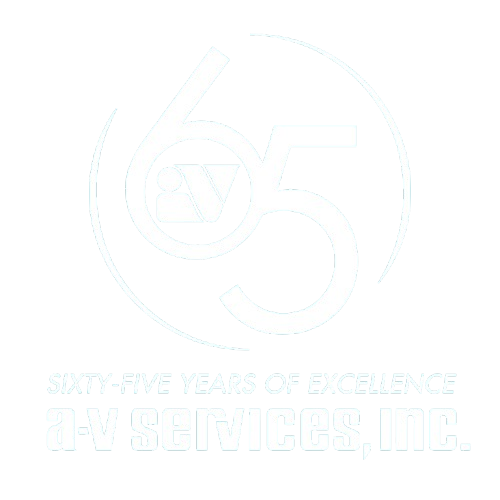Healthcare is undergoing a profound transformation, driven by technology that redefines how care is delivered. Modern tech systems are moving beyond basic functions, becoming the central nervous system of hospitals, clinics, and medical training centers. This shift is creating environments that are more connected, efficient, and responsive to the needs of both patients and providers. By improving communication, streamlining patient care, and enabling real-time collaboration, technology is elevating healthcare facilities into truly integrated spaces.
These advancements are not just about adding new gadgets; they are about fundamentally rethinking the infrastructure of care. From the patient’s bedside to the surgical theater and the remote consultation room, integrated technology creates a seamless flow of information. This allows medical teams to collaborate more effectively, make faster, data-driven decisions, and ultimately deliver a higher standard of patient care. Let’s explore how these tech innovations are making a tangible difference in today’s healthcare settings.
ENHANCING COMMUNICATION AND COLLABORATION
Clear and instant communication is critical in healthcare, where every second can count. Technology solutions break down traditional communication silos, connecting disparate teams and locations into a unified network. This ensures that crucial information is shared securely and efficiently, whether a provider is in the next room or
across the country.
Connecting Teams, Wherever They Are
The rise of hybrid work models in healthcare means clinicians and administrative staff need to connect from various locations. Solutions from partners like Cisco are essential in building this connected ecosystem. Their platforms provide secure, reliable communication that powers inclusive care for everyone involved. This allows for
seamless virtual consultations between specialists in different cities, enables nurses to communicate instantly with physicians, and lets administrative staff manage operations remotely without compromising security or efficiency. This level of connectivity supports a more flexible and resilient healthcare workforce.
Real-Time Collaboration for Better Outcomes
In complex medical cases, collaboration is key. Tech-enabled meeting rooms and collaboration boards allow medical professionals to come together to review patient data, scans, and lab results in real-time. Interactive displays, such as those from DTEN, create a dynamic environment where teams can annotate images and brainstorm treatment plans as if they were in the same room. These all-in-one solutions, designed for platforms like Zoom, offer crystal-clear audio and life-like video, making virtual collaboration intuitive and effective. This immediate, visual interaction leads to better-informed decisions and improved patient outcomes.
STREAMLINING THE PATIENT EXPERIENCE
Technology is also revolutionizing the patient experience, making hospital stays more comfortable, informative, and empowering. By integrating control systems and communication tools directly into patient rooms, facilities can provide a more personalized and less stressful environment.
The Smart Patient Room
Imagine a patient room where lighting, temperature, and entertainment are controlled with a simple touch. Crestron specializes in creating these smart environments. Their user-friendly touch screens allow patients to adjust their surroundings, access educational materials about their condition, or communicate with their care team.
This level of control gives patients a sense of autonomy during what can be a difficult time.
For providers, this same technology streamlines workflows. Nurses can monitor patient status remotely, receive alerts, and even conduct virtual check-ins through in-room systems, saving valuable time and reducing unnecessary foot traffic. Secure wireless presentation capabilities allow doctors to review test results with patients and their
families directly on the room’s display, fostering clearer communication and shared decision-making.
Powering Telehealth and Virtual Visits
Telehealth has become a cornerstone of modern medicine, offering convenient access to care. Technology provides the backbone for these virtual interactions, ensuring they are secure, clear, and engaging. DTEN’s telehealth solutions, which are HIPAA-compliant on Zoom, empower providers to offer interactive virtual visits. These systems are designed to be simple to set up and use, removing technical barriers for both patients and clinicians.
This technology extends beyond simple video calls. It facilitates everything from routine check-ups and mental health sessions to specialist consultations and remote monitoring. By making healthcare more accessible, telehealth solutions improve patient outcomes, especially for those with mobility issues or those living in remote
areas.
OPTIMIZING MEDICAL TRAINING AND EDUCATION
The next generation of healthcare professionals is learning in environments that are as advanced as the facilities they will one day work in. Technology is transforming medical schools and training centers, providing immersive and interactive learning experiences.
Next-Generation Learning Spaces
From simulation labs to lecture halls, technology creates dynamic educational settings. Crestron systems allow educators to manage an entire training environment with one touch. They can send high-quality video feeds to multiple displays, control audio levels, and even configure room setups for different training scenarios automatically. In simulation labs, this tech allows for the recording and playback of training sessions, providing invaluable feedback for students.
Intelligent video conferencing and collaboration tools also connect students with experts from around the world. This global access to knowledge and expertise enriches the educational experience, preparing students for the collaborative nature of modern healthcare.
THE FOUNDATION OF A MODERN HEALTHCARE FACILITY
Implementing these powerful tech solutions requires a robust and secure network. The entire system, from patient rooms and operating theaters to administrative offices and training facilities, must be integrated seamlessly. This unified approach ensures that all technologies work together harmoniously, maximizing efficiency and uptime.
Centralized management platforms allow IT administrators to monitor, troubleshoot, and update systems across an entire healthcare network from a single dashboard, ensuring reliability and security.
Technology is no longer an accessory in healthcare; it is a core component of patient care, operational efficiency, and medical innovation. By embracing these advancements, healthcare facilities can create smarter, more connected environments that benefit everyone.
Ready to transform your healthcare space with cutting-edge technology solutions? Contact AV Services today to learn how we can help you build a more connected and efficient facility.

